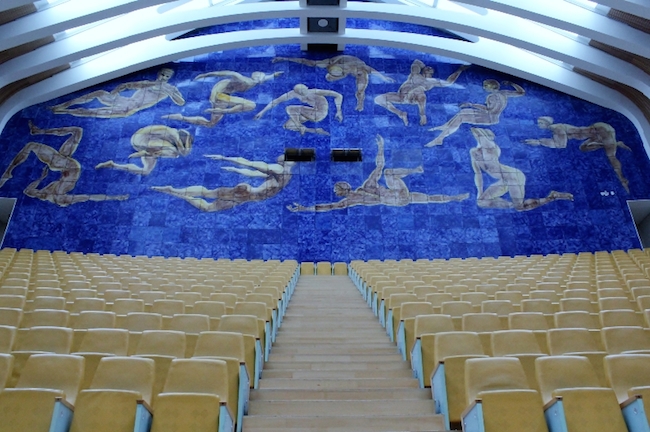Following the work of potentates within the architectural community sometimes feels like celebrity gossip. The difference, we guess, is that Twitter fights between rappers or the childish antics of actors rarely boil over into multimillion dollar lawsuits or disasters which could result in someone getting crushed under a falling piece of masonry.
But as architects around the world strive to create the latest in a line of drool-worthy futuristic designs, they inspire very loud and very public drama. Yes, their buildings look spectacular, but is that worth purchasing an architectural lemon or risking the lives of workers? The stories about buyer’s remorse following the openings of these buildings come out frequently. We’re especially concerned that these disputes are often settled in lawsuits, which don’t resemble the legal process as much as they do a slap fight between the architects and their critics. How is this helping the artform?

We recently noticed an editorial in Quartz, which touched on high-profile disasters with buildings designed by, among others, British-Iraqi architect Zaha Hadid and Spanish architect Santiago Cordova. Works by each architect have been criticized for serious structural failings. Read too much into these and you may be nervously looking up at the ceiling should you ever visit the Guangzhou Opera House in China.
Hanna Kozlowska of Quartz frames the debate within a kind of architectural arms race for cities who are trying to attract tourists. But, like some sort of money-devouring Faustian contract, these buildings often leave their owners feeling burned.
The city of Valencia threatened Calatrava with legal action last year after parts of the roof on his ceramic-shard-studded opera house (the images here are all from that project) at the eight-year-old City of the Arts and Sciences complex blew away in the wind, causing the city to close the building until repairs could be made. It was meant to be a homage to Antonio Guadi’s ceramic encrusted buildings and Jørn Utzon’s, magnificent tiled marvel, the Sydney Opera House.
Calatrava was smacked with an earlier lawsuit threat in 2013 over accusations that the roof of the Ysios winery in Spain continually let in water. The lawsuit threat came after the owners were not successful in getting Calatrava’s builders to fix the leaks. That same year a court in Spain ordered Calatrava to pay $4.3 million for design flaws in a Conference and Exhibition Center in Oviedo.
An article in fastcodesign labels him “the world’s most hated architect” because of cost overruns and building malfunctions. His transit hub at Ground Zero in New York is reported by the New York Times to cost $4 billion, making it the most expensive train station in the world. The cost seems even more out of whack when one considers that it’s mainly used on weekdays by 46,000 travelers daily compared to the 208,000 daily for Metro-North Railroad stream through the Grand Central Terminal.

Beyond the monetary drawbacks are questions about human rights. One has only to look at the controversy around Hadid’s sports stadium or her cultural center in Azerbaijan to suspect that the foundations for some of these works were laid on the back of human misery. These are problems that one might associate more with the large scale building projects of antiquity than something that was constructed a handful of years ago.
Kozlowska stops short of discussing the implications these projects have on the field as a whole, writing them off to the work of “starchitects,” but considering all of these allegations together has left us feeling uneasy. What does it mean for the artform to have these attention-demanding projects burdened with so much negative baggage? Are these incidents simply the result of carelessness or do they imply that these innovative buildings, by their nature, are not sustainable? Can we have our cake and eat it, too?
The answer to that question is “eventually.” We should relax and let the populist critics rage. Inventive architecture tends to always cost more than budgeted and the designs are hated. But over time those much-maligned buildings become a city’s beloved structure, the iconic signature building of the community. That is what Utzon’s Opera House did for Sydney. It too went through cost overruns and more drama than a daytime soap for nearly two decades. Today it’s a world treasure. And, as for Calatrava’s ridiculously expensive subway station, thank the art muses that there is at least one building of distinction in Ground Zero’s forest of overpriced mediocrity.
But what do you think? Let us know in the comments.
Bill Rodgers is a Contributing Editor at CFile.
Any thoughts about this post? Share yours in the comment box below.







Architect Santiago Cordova’s City of the Arts and Sciences cultural center in Valencia, Spain.

Add your valued opinion to this post.